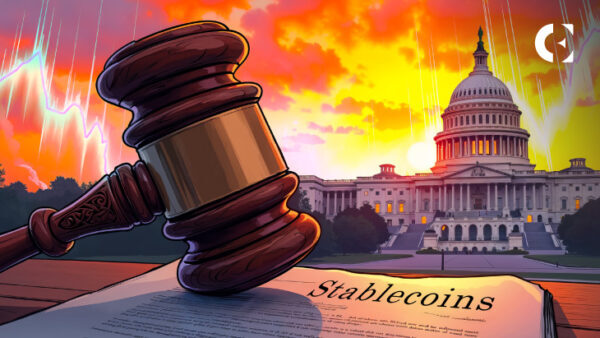- SEC staff guidance: Certain USD-backed stablecoins (‘covered’) not deemed securities
- Criteria: 1:1 peg/redeemability, low-risk liquid backing; mint/redeem needs no SEC regulation
- Commissioner Crenshaw dissents, citing legal flaws, understated risks, few qualifiers
The U.S. Securities and Exchange Commission’s (SEC) Division of Corporation Finance has issued a new guidance on stablecoins Friday, providing clarity while the Congress is still drafting the broader crypto legislations.
The guidance introduces the term “covered stablecoins,” defining a specific category deemed not to be securities under federal law.
Defining ‘Covered Stablecoins’ & Legal Implications
According to the SEC staff guidance, “covered stablecoins” meet three criteria: they maintain a one-to-one value with the U.S. dollar, are redeemable for USD on demand at par, and are backed by low-risk, highly liquid assets.
Crucially, the guidance determines that these specific stablecoins do not qualify as securities. This means activities related to minting and redeeming “covered stablecoins” likely do not require SEC registration. The determination references legal precedents like Reves v. Ernst & Young and SEC v. W.J. Howey Co. which set criteria for what constitutes a security.
Rationale: Usage vs. Investment Contract
The SEC staff further explained that such stablecoins are marketed and used primarily as a medium of exchange, for money transfers, and as a store of value – not as investment products where buyers expect profit from the efforts of others (a key element of the Howey test).
This marks a notable shift from the stance of former SEC Chair Gary Gensler, who suggested most digital assets function as securities. The new guidance applies a more nuanced approach based on specific characteristics.
Related: Asset Performance March 2025: Gold Rallied in March While Tech Stocks, Crypto Fell
It explicitly does not apply to algorithmic stablecoins, yield-bearing stablecoins, or tokens pegged to assets other than the U.S. dollar.
Commissioner Crenshaw Dissents, Cites Risks & Flaws
However, SEC Commissioner Caroline A. Crenshaw issued a critical statement dissenting from the staff guidance.
“The statement’s legal and factual errors paint a distorted picture of the USD-stablecoin market that drastically understates its risks,” Crenshaw wrote. She argued the analysis relies on assumptions about issuer actions (stabilizing price, ensuring redeemability) that may not hold true.
Related: Trump’s SEC Pick Paul Atkins Clears Committee, Heads to Full Senate
Crenshaw also posed a practical challenge: “…what if any existing stablecoins actually meet the stated criteria and fall within the staff’s definition of ‘Covered Stablecoin’?“
While the guidance could potentially boost institutional confidence and clarify pathways for issuers meeting the ‘covered’ definition, Crenshaw’s dissent highlights ongoing debate and uncertainty on the practical application and risk assessment of stablecoins based on the present framework.
Disclaimer: The information presented in this article is for informational and educational purposes only. The article does not constitute financial advice or advice of any kind. Coin Edition is not responsible for any losses incurred as a result of the utilization of content, products, or services mentioned. Readers are advised to exercise caution before taking any action related to the company.







